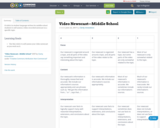
A rubric in student language written for middle school students to self-assess a video-recorded newscast on a specific topic.
- Subject:
- English Language Arts
- History
- Social Science
- Material Type:
- Assessment
- Date Added:
- 06/22/2017

A rubric in student language written for middle school students to self-assess a video-recorded newscast on a specific topic.
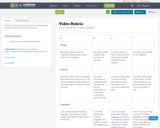
A rubric in student language written for middle school students to self-assess a video production.
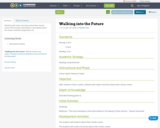
Students will create a brochure about their chosen career. The brochure should have a description about the career, academic preparation, etc.

“The Treasure of Lemon Brown” by Walter Dean MyersSee Overview attachment for lesson details.
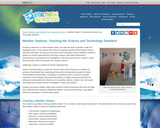
This article links to resources to help teachers create their own weather stations, participate in real data projects, and assess their students' knowledge of weather tools.

When the team has assessed a student's need for AEM, chosen formats and acquired them, it is only the beginning of the effective use of AEM. In this session we will explore ideas about how teachers and students use AEM in real classroom settings. We will share ideas about questions like "How do students develop skills to use AEM independently?" and "What do teachers need to know about teaching in classroom groups where some students require accessible formats?" When you join this session you will have the opportunity to explore basic concepts of classroom management for AEM and apply them to real students and educators in your own practice.
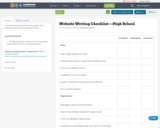
A checklist used by teachers to assess high school students as they work on creating a website.
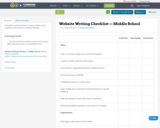
A checklist used by teachers to assess middle school students as they work on creating a Website.
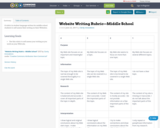
A rubric in student language written for middle school students to self-assess their writing on their Websites.

About once a week, which approximately corresponds to each chapter covered, students are required to write a 2-3 paragraph reflection on the material covered in class. They may use information found in the book, or their experiences during lecture and lab, but they need to discuss their thoughts on the material. This written assignment encourages students to think more deeply about the material discussed, as well as to become more comfortable with the writing process.
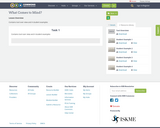
Contains tool over view and 4 student examples

Contains What Comes to Mind Overview and 2 student examples (one stronger response and one weaker response)
![Why does Blood Flow Change? Investigating the Math of Blood Flow Dynamics [version 1.0]](https://oercommons.org/static/newdesign/images/materials/default-thumbnail-index.png)
This collection of activities explores the relationship between blood flow, pressure, and the factors of resistance through graphs and modeling direct and inverse variation.

Students will read a description of interest rates, then they will review two scenarios, and finally they will use what they have learned about interest rates to analyze the scenarios in written form. A teacher answer key is included.

Students will read through a short description of positive and negative interest rates, then they will complete a chart developing explanations for specific scenarios. A teacher answer key is included.

In this workshop participants will be able to discuss cultural sensitivity and learn to embrace diversity. Cultural blindness — being “fair” by treating everyone the same is often hard to view as problematic. Discussion in this workshop will focus on inspiring students to understand different cultures and beliefs as well as the importance of culturally sensitivity to these different beliefs. This workshop will encourage participants to; explore their own biases, consider different points of view and will utilize cultural lenses to develop cultural sensitivity.
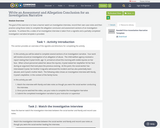
The goal of this exercise is to have a learner watch an investigative interview, record their own case notes and then practice using those notes to complete the allegation conclusion and assessment sections of an investigation narrative. To achieve this, a video of an investigative interview is taken from a vignette and a partially completed investigation narrative template is provided.
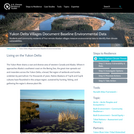
Students and community residents of four remote Alaskan villages measure environmental data to identify their climate vulnerabilities.
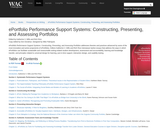
ePortfolio Performance Support Systems: Constructing, Presenting, and Assessing Portfolios addresses theories and practices advanced by some of the most innovative and active proponents of ePortfolios. Editors Katherine V. Wills and Rich Rice interweave twelve essays that address the ways in which ePortfolios can facilitate sustainable and measureable writing-related student development, assessment and accountability, learning and knowledge transfer, and principles related to universal design for learning, just-in-time support, interaction design, and usability testing.
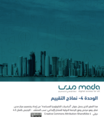
تشرح هذه الوحدة نماذج التقييم المختلفة المستخدمة في تكنولوجيا المساعدة لتحديد أفضل الحلول للأشخاص ذوي الإعاقة